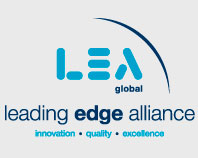The Financial Accounting Standards Board (FASB) issued new lease standards in 2016, ASC 842, replacing and modifying current financial accounting and reporting for lessees and lessors. The new standard is a significant shift in accounting processes, which can impact various other aspects of a business.
Public companies were required to implement ASC 542 by the end of 2018, but the same rules did not apply to private companies. Privately held companies had additional time to comply, which was extended even further because of COVID-19. However, that deadline has now arrived for private companies, as they must comply with ASC 842 for fiscal years that begin after December 15, 2021. For most private companies, compliance starts now.
Getting Started with Implementation: Identifying Leases
The first step to implementation is to identify all existing leases. The definition of a lease is broad: if you have the right to direct and use a physical asset to gain economic benefits from it, you likely have a lease.
Leases are sometimes stand-alone contracts, but they can be part of another contract as well. These incorporated leases might be difficult to spot for some privately held companies.
For companies with many leases, simply identifying and gathering this information can be a huge feat.
Classifying Leases: Financing and Operating Leases
Once you have identified all of the leases, the company must classify each lease as either a financial lease or an operating lease. This classification is necessary because each type of lease is treated differently under the new standard.
While you likely had similar classifications previously, the definitions have changed slightly, which may affect how each lease is categorized under the new standard.
Financing Leases
Financing leases were previously referred to as capital leases. In general, the definition of this type of lease has only changed slightly in the new standard.
If the lease meets any of the following qualifications, it is considered a financing lease:
- There is a transfer of ownership at the end of the lease term
- There is an option to purchase the asset at a discounted price at the end of the lease term
- The term of the lease includes more than 75% of the useful life of the asset (this language is slightly changed in the new standards, but the concept is still present)
- The present value of lease payments is at least 90% of the asset’s fair market value (the 90% language is not in the new standard, but it refers to “substantially all” of the fair market value, so the concept is similar)
- The asset leased is of such a technical nature that there could be no alternative use for the asset at the end of the lease
That last qualification is new to ASC 842. Essentially, if the lease closely resembles a purchase because it is unique to the company or the industry, it will be considered a financial lease.
Technically, the new standard uses the language “right to use” to describe the assets involved in financing leases. However, there is a distinction between assets in a financing lease and assets in an operating lease that is important for depreciation schedules and expenses. As a result, keeping these leases separate from operating leases is helpful.
In general, most privately held companies will see very few changes between their “capital leases” under the old standards and the “financing leases” under the new ASC 842.
Operating Leases
The biggest change with the new standard is that operating leases will now show up on the balance sheet. For some, the changes to the balance sheet because of this change alone will be significant.
As a quick example, Stanley Black & Decker, a well-known tool manufacturer, saw a $525 million impact on its balance sheet when it made the required changes in 2018. While there are certainly impacts in other industries, it appears that the manufacturing industry will feel this change the most.
Under the new standard, these operating leases are on the balance sheet at inception. The obligation uses the present value of the lease payments and the “incremental borrowing rate,” which is generally defined as the interest rate a lessee would have to pay to borrow the funds to finance the purchase of a similar asset.
Determining the correct rate can be a challenge, especially for smaller companies. The risk-free rate (the U.S. Treasury rate) can be a practical starting point. Some general rules to develop this rate might be helpful:
- The rate for a longer lease likely needs to be higher than a shorter-term lease
- The company’s credit risk might also be a factor to consider in determining the correct rate to use
- The nature and quality of the asset involved should be considered
- The amount of funds “borrowed” will usually result in a higher discount rate
For any lease under 12 months, however, companies can just expense the payment as incurred and exempt the lease, essentially ignoring this new rule. If you choose to use the operating lease standard or if you are required to use it, you must continue to expense the lease on a straight-line basis.
Operating Lease Example
Imagine your company’s incremental borrowing rate is 3%. You are leasing the right to use a piece of equipment for five years, with $3,000/month payments.
In this example, the present value of the lease is $83,026.69. Thus, you would add an asset to your books valued at $83,026.69. Then, you straight-line expense this asset over the next 60 months so that the expense is roughly $1,383.78.
You will note that this example results in a significant change in monthly expenses. Even though your cash flow statement will show $3,000 per month to pay the lease, you are only permitted to expense $1,383.78 on your income statement.
Privately held companies may want to get professional accounting assistance as they make the transition to comply with the FASB new lease standards.
We’re Here to Help
If you have any questions, please contact David Kloess by emailing [email protected].




